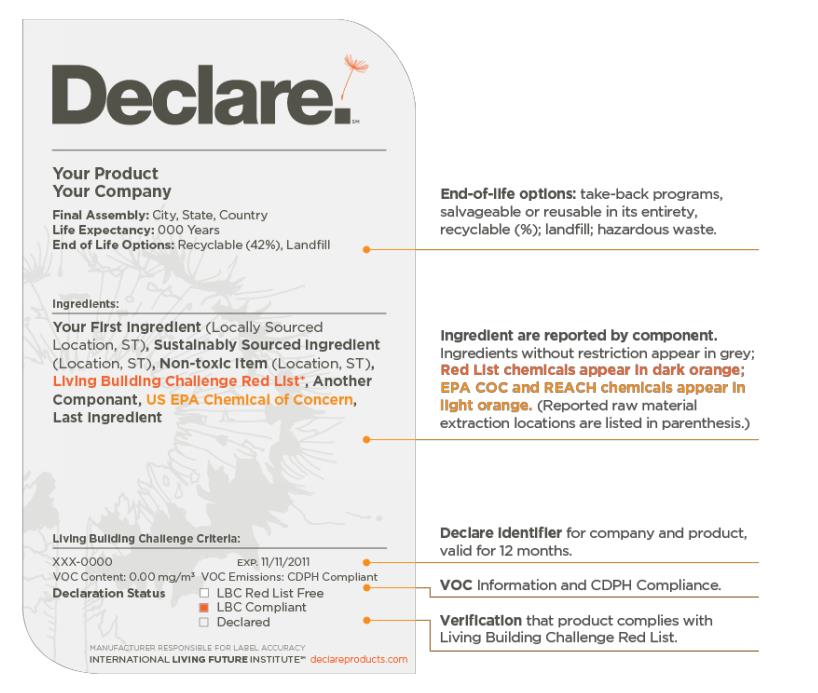We are all consumers. Whether we are buying food, couches or drywall we have always weighed price versus perceived quality. In the past we had very little access to knowing what was in the product. This changed with the advent of ingredient lists and nutrition labels on food. That information brought the ability to be a bit more discerning about the food and chemicals that we ingest. Today we have all kinds of labels on food that allow us to further refine our food choices – organic, non-GMO, local… we have become conscious consumers.
But what about non-food items – we purchase a lot of stuff. Beyond the little Made in Wherever tag, there is little-to-no transparency in product labeling. Do you know what the chair you are sitting on is made of? What about the couch? The kitchen countertop? The drywall? Should you care? Yes. Why? Products are made of good and bad materials including lots and lots of chemicals, and can be sourced from all sorts of places with all sorts of labor laws and environmental practices. Among other things, all of those materials and chemicals affect your indoor air quality, your health, influence geo-economics, contribute to environmental degredation, and have implications for end-of-use disposal.
In the construction world there are lots of ways to measure and certify the materials used in crafting your home or office building. These include: UL, GreenCircle, GreenSeal, CradleToCradle, FSC, GreenGuard… the list is seemingly endless.
The DECLARE LABEL is a little different. The brainchild of the International Living Futures Institute (ILFI) and allied with the Living Building Challenge certification program, DECLARE’s focus is on transparency and strives to answer the questions:
- Where does a product come from
- What is it made of and
- Where does it go at the end of its life?
DECLARE answers these questions on an easy to understand nutrition label that includes information about the product’s Living Building Challenge status and flags ingredients that are on the Red List.
The Red List is a list of chemicals and additives that are the worst in class materials that have been proven to bio accumulate in the food chain and are harmful to human health and the environment. Red List chemicals should be avoided, especially in the environments where we live, work and play. Under Living Building Challenge criteria, Red List items are not allowed – at all.
If, when you built your next building, you were to attempt Living Building Challenge certification, you would be required to exclude products or raw materials that contain any Red List items. There may be an exception for some electronic items but other than that, no exceptions. Check out the Red List here.
But you don’t have to wait until you build your next home or office, right now you can use the Red List and the DECLARE LABEL database as reference tools to help you be an informed, conscious consumer. Think about how difficult it would be to figure out all of the ingredients in that new couch you have your eye on…or that beautiful carpet…or even that piece of drywall. Hidden chemicals including: arsenic, formaldehyde and other preservatives, may be hidden in those products, off-gassing into your indoor air and potentially poisoning your family. We all need to be aware of the health hazards that we are unwittingly bringing into our living spaces – ask questions and demand products that DECLARE what they are made of. Your activism will benefit us all.
